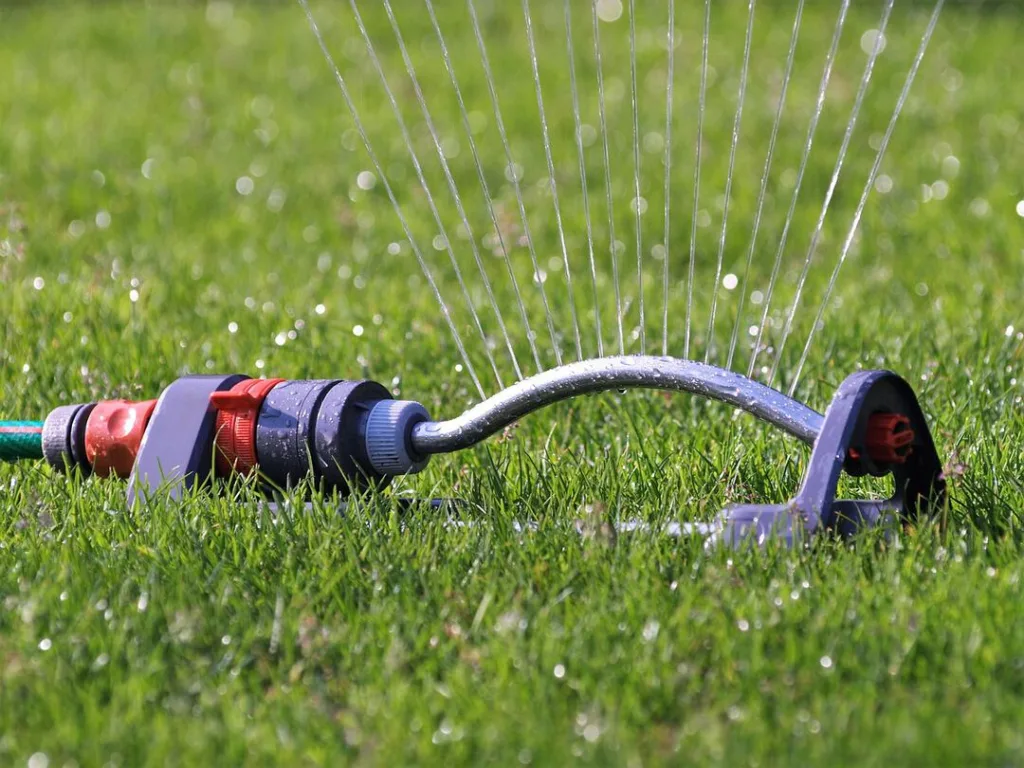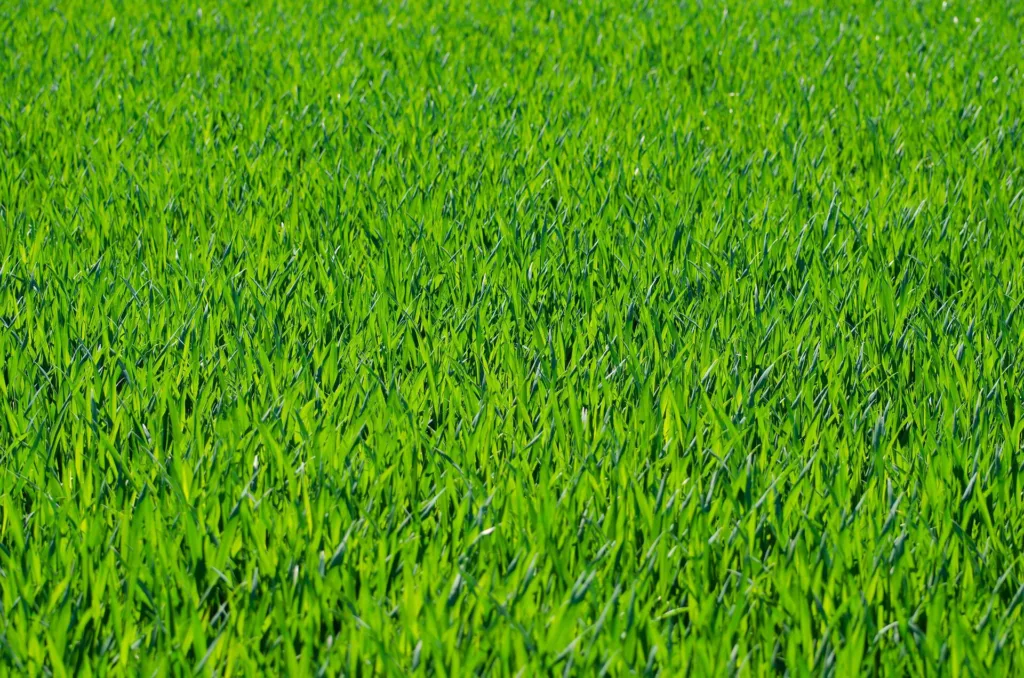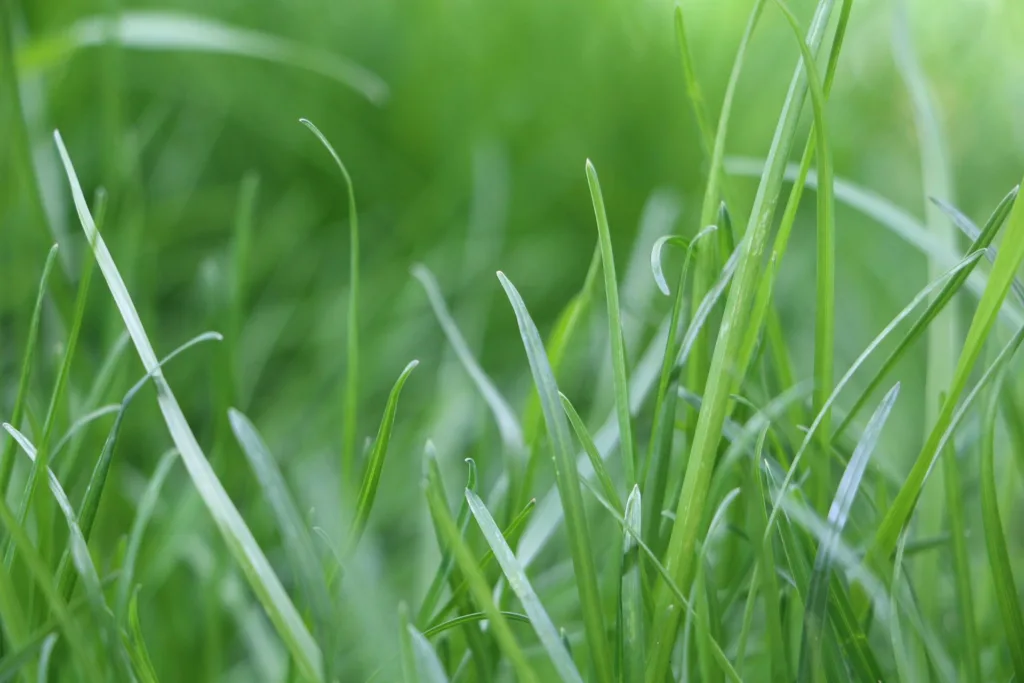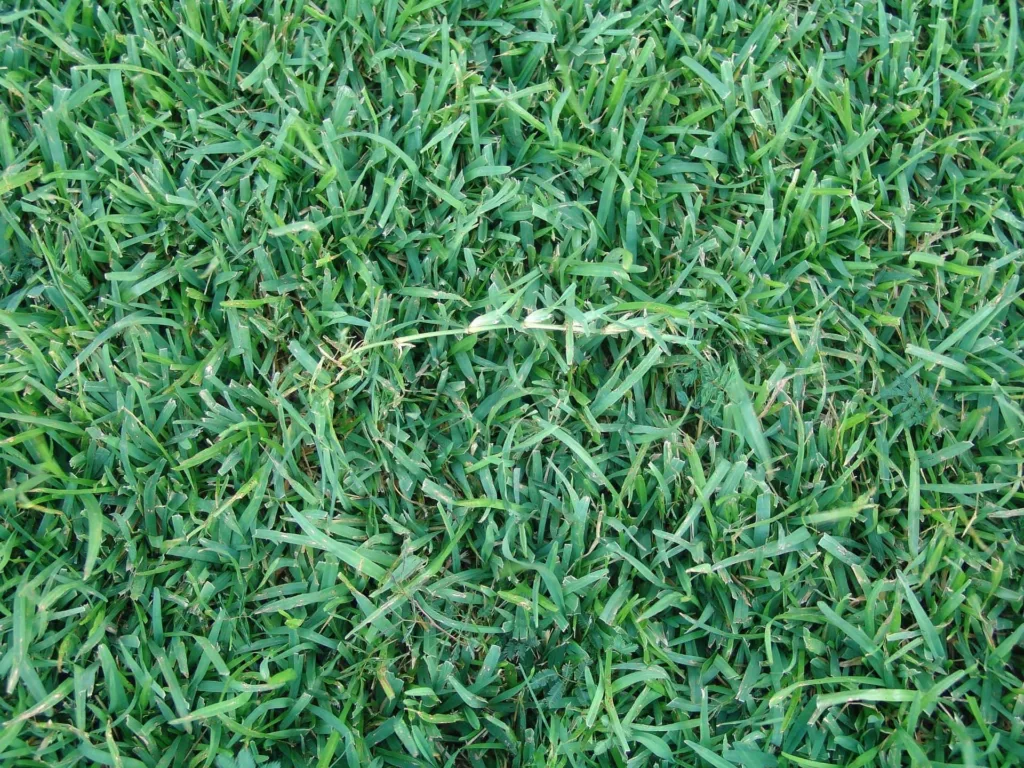Bermuda grass, known scientifically as Cynodon dactylon, is a champion of the warm-season turf varieties, famed for its resilience and the ability to bear the brunt of the summer sun. If your dream is a thick, durable, and drought-resistant lawn, then Bermuda grass might just be the greenery you need. This comprehensive guide will walk you through everything from planting this robust grass to maintaining a vibrant green carpet through the seasons. Let’s dig in!
Introduction
Bermuda grass, or as the scientists call it, Cynodon dactylon, truly stands out in the turf battlefields, especially across the warmer climes of the globe. It’s the go-to for homeowners who imagine their lawn as a lush, tough, green carpet that laughs in the face of heat waves and scoffs at droughts. If you’re picturing your yard as the neighborhood’s green jewel even during those dog days of summer, Bermuda grass could be your best ally.
The popularity of Bermuda grass isn’t just about its resilience. This grass type charms with its fine texture and deep green color that can make any lawn look like a well-manicured golf course. Preferred for both its aesthetics and its ability to recover quickly from wear and tear, it’s a favorite for regions that sweat under a relentless sun. So if you’re aiming for lawn greatness, understanding this robust grass type is your first step to glory. Let’s explore what makes Bermuda grass a prime choice for yards that stand out and stand up to the elements.
Understanding Bermuda Grass
Bermuda grass does its growing in rosettes, shooting up and out, a survival tactic that allows it to spread fast and wide. This grass’s appearance is characterized by its fine texture and deep green color—though it will shade down during cooler temperatures, taking on a more straw-like appearance. A major win for Bermuda is its rapid regrowth, making it a top nominee for high-traffic zones, like sports fields or active backyards.
Now, let’s talk about the optimal conditions for Bermuda to thrive. This grass variety loves the heat and does best in regions where temperatures hover between 75 and 99 degrees Fahrenheit. It demands sunlight, lots of it—shade is the nemesis here, stunting its growth and diminishing its vigor. As for soil, Bermuda isn’t fussy; it adapts well to a variety of soil types but truly excels in well-drained, sandy loam soils.
Comparatively, Zoysia grass—another popular turf option—tends to have a slower growth rate but boasts a resistance to colder temperatures that Bermuda might frown upon. The choice between Bermuda and Zoysia often hinges on these growth dynamics and how much maintenance one is willing to commit to.
How to Plant Bermuda Grass
Ready to transform your patchy yard into a lush, green paradise? Planting Bermuda grass is less complex than you might think. Follow these streamlined steps to ensure your new lawn kicks off to a flying start.
Choose the Right Time
Timing is critical when sowing Bermuda grass. Aim for late spring or early summer when soil temperatures consistently hit at least 65°F. This warmth is crucial for germination and will give your grass a solid growth spurt before cooler months roll in.
Prepare Your Soil
First, break up any compacted soil with a tiller to about 4 to 6 inches deep. Remove debris, rocks, and weeds that can impede growth. Then, level the ground using a rake and lightly compact the soil to eliminate air pockets. A well-prepared bed ensures your seeds make good contact with the soil, which is vital for germination.
Sow the Seeds
When it comes to seeding, precision and even distribution are your friends. Use a broadcast spreader to ensure even coverage across your lawn. Generally, applying about 1 to 2 pounds of seeds per 1000 square feet does the trick. After spreading, lightly rake the area to cover the seeds with a thin layer of soil, enhancing their moisture contact – a must for good germination.
Initial Watering
Post-seeding, your focus should shift to keeping the soil consistently moist, not soggy. In the first few weeks, light watering once or even twice a day may be necessary depending on your climate. The goal is to sustain the top inch of soil with enough moisture to support sprouting without washing away the seeds.
The First Few Weeks
As your Bermuda grass begins to germinate, resist the urge to walk on the new growth and keep the area free from heavy activity. Monitor the progress and continue to water regularly. A little patience here goes a long way toward establishing a robust Bermuda grass lawn.
By starting with the right steps, you’re setting up your lawn for success. Prepare for a bit of initial effort and keep an eye on growth and watering. Before you know it, you’ll be trading your seeding tools for a lawn mower, ready to enjoy that satisfying trim of your fresh, dense Bermuda grass. Happy planting!

Bermuda Grass Care Tips
Maintaining a Bermuda grass lawn isn’t heavyweight lifting, but it does call for consistent care to keep it looking championship-worthy. Here’s a straightforward rundown of what you need to keep that lawn in peak condition.
Watering
Bermuda grass is like a sunbathing tourist — it loves the heat but needs its water too. During active growth periods, watering deeply once or twice per week should suffice. The key is to moisten the soil up to a depth of about 6 inches. Early morning is the best time to water, cutting down on evaporation and giving the grass blades time to dry off during the day, which helps prevent disease.
Mowing
Keep that mower handy because Bermuda grass likes a trim. The optimal mowing height depends largely on the variety you’re dealing with, but generally, keeping it between 1 and 1.5 inches tall is a good rule of thumb. Regular mowing — think once a week — encourages the grass to grow thicker and spread out, filling in any bald spots and crowding out weeds naturally.
Fertilizing
To keep your Bermuda grass looking like the lush outfield of a baseball stadium, proper feeding is essential. During the growing season, a nitrogen-rich fertilizer works wonders. You’ll want to fertilize every 4 to 6 weeks, adhering closely to the package directions to avoid overfeeding, which can lead to thatch buildup and other issues. Late spring is often the best time to start the fertilization routine, just as the grass kicks into its growth phase.
By sticking to this straightforward care schedule, your Bermuda grass will be more than just surviving; it’ll be thriving, ready to handle backyard BBQs, summer lounging, and whatever else you throw at it. Just keep it simple: water, mow, feed, and enjoy the results.
Overcoming Challenges with Bermuda Grass
Bermuda grass, despite its hardy nature, isn’t without its snags. Like any popular kid on the block, it’s got its set of challenges—pesky pests and annoying ailments that might require some elbow grease to manage.
Battling Pests
One of the main culprits that could mess with your Bermuda grass’s vibe is the infamous armyworm. They’re the grubs that sneak into your lawn, eating grass blades as if it’s their personal buffet. Then there are the Bermuda grass mites—tiny critters that aren’t above sucking your grass blades dry, leaving them brittle and discolored.
The step to handle these uninvited guests? Regular monitoring and acting fast are key. At the first sign of infestation, depending on your love for eco-friendly solutions or chemical interventions, opt for appropriate insecticides or organic methods like neem oil or beneficial nematodes that target and control pest populations.
Managing Diseases
Bermuda grass also has a knack for catching fungal diseases, especially when the conditions are moist and warm—think brown patch or dollar spot diseases, which create unsightly spots and patches on your lawn. The best counterattack? Fungicides can work, but so does a good defense strategy—like managing your watering schedule to avoid excessive moisture and ensuring your lawn is not a breeding ground for fungi.
Remember, the essence of keeping Bermuda grass looking pristine lies in preventative care. Regular aeration and dethatching, accurate watering, and proper mowing height can prevent most of these issues. Stick to a maintenance schedule that interrupts the life cycle of pests and prevents conditions favorable for diseases.
By staying proactive and implementing these tips, you’ll keep your Bermuda grass healthy, which means less time playing lawn doctor and more time enjoying a lush, green carpet under your feet.
Seasonal Care for Bermuda Grass
Navigating the shifting demands of Bermuda grass through the changing seasons is crucial for maintaining its lush, vibrant appearance. Here’s a straightforward rundown of what needs doing, when.
Spring: Wake-Up Call
Spring is all about prep and setting the stage for robust growth. Begin by testing your soil to ensure it has the right pH and nutrients; make adjustments as needed. As temperatures consistently hit 65°F, start your mowing routine, keeping the blade height at about 1.5 inches. This is also the prime time for fertilizing—choose a high nitrogen fertilizer to kickstart growth.
Summer: Maintenance Mode
Summer demands vigilance. Watering becomes critical as the heat ramps up. Aim for about 1 to 1.5 inches of water per week, ensuring deep, infrequent waterings to encourage root growth. Continue mowing weekly, but adjust the height to about 2 inches to help the grass retain moisture. Watch out for pests and treat infestations promptly to prevent damage.
Fall: Preparation for Rest
As the season cools, it’s time to prepare your Bermuda grass for dormancy. Reduce the mowing frequency and height as growth slows down. A final round of fertilizer in early fall will help strengthen the roots for the upcoming cold. If you’re in a cooler climate, consider overseeding with a cool-season grass like ryegrass to maintain a green lawn in winter.
Winter: Dormancy and Protection
In winter, Bermuda grass takes a nap. It’s mostly about maintenance—keeping the lawn clean from leaves and debris which can foster mold and disease. Minimize traffic on the lawn to prevent soil compaction and damage to the dormant grass.
This cycle of care helps ensure that when spring rolls back around, your Bermuda grass is ready to re-enter the spotlight, perhaps a little more lush than the year before. Stay consistent, stay observant, and your lawn should remain in top condition, year-round.

Advanced Bermuda Grass Maintenance
When it comes to maintaining a Bermuda grass lawn, diving into the deeper aspects of care can significantly enhance its health and appearance. Two of the most beneficial advanced maintenance practices are aeration and dethatching. Implementing these techniques at the right times can prevent common problems and promote a denser, more resilient turf.
Aeration
Aerate your Bermuda grass to improve its health and vigor:
- Purpose: Aeration involves perforating the soil with small holes to allow air, water, and nutrients to penetrate the grass roots. This helps the roots grow deeply and produce a stronger, more vigorous lawn.
- Timing: The best time to aerate Bermuda grass is during its peak growing period in late spring or early summer. This timing allows the grass to heal and grow back quickly after the soil has been disturbed.
- Tools: For DIY enthusiasts, aerating tools such as spike aerators or plug aerators can be used. The plug aerator, which removes a core of grass and soil, is generally more effective for relieving deep soil compaction.
Dethatching
Reduce the thatch in your lawn to ensure optimal health and growth:
- Importance: Bermuda grass is prone to developing a thick layer of thatch—dead grass and other organic material that can block water, air, and nutrients from reaching the soil.
- Procedure: Dethatching removes this layer to improve the health of the lawn. It’s best performed during the growing season, ideally just before you aerate.
- When to Dethatch: When the thatch layer exceeds half an inch, it’s time to dethatch.
- Tools: You can use a manual dethatching rake for small areas or a power dethatcher for larger lawns. Be careful not to harm the healthy grass roots as you remove the thatch.
By incorporating these advanced techniques into your Bermuda grass maintenance routine, your lawn remains not only attractive but also fundamentally healthy. Regular aeration and dethatching make your lawn more drought-resistant and better equipped to withstand various stresses, giving it the robustness Bermuda is known for.
Comparing Bermuda Grass with Other Lawn Grasses
When considering the choice for a lawn covering, comparing Bermuda grass with other turf favorites, especially Zoysia grass, is vital for homeowners. These grasses excel in warm climates yet offer different advantages and disadvantages that could influence your decision.
Bermuda Grass
Bermuda grass stands out for its:
- Durability: It grows aggressively, making it ideal for high-traffic areas like sports fields and active yards.
- Resilience: It can recover quickly from damage due to its robust growth habits.
- Heat Tolerance: Perfect for southern climates where the sun is relentless.
- Sunlight Requirement: It thrives under full sun but struggles in shady conditions.
Zoysia Grass
Zoysia grass is valued for its:
- Density and Softness: Provides a denser and softer turf, which is visually appealing and comfortable underfoot.
- Shade Tolerance: Unlike Bermuda, Zoysia does better in mixed sunlight and shadow conditions.
- Weed Resistance: Once established, its dense growth helps resist weeds effectively.
Choosing the Right Grass
When selecting between Bermuda and Zoysia, consider the following:
- Sunlight Exposure: Your lawn’s average daily sun exposure is crucial.
- Growth Patience: Zoysia takes longer to establish compared to Bermuda.
- Traffic Needs: Bermuda grass is better suited for high-traffic areas.
For detailed comparisons and more information on other types of grass, visit Grass Types. This resource can help align your choice with your lifestyle needs and local climate conditions.
FAQs and Troubleshooting for Bermuda Grass Care
Got Bermuda grass blues? Don’t worry! Here, we’ve compiled a list of frequently asked questions and some practical troubleshooting tips to help you keep your lawn looking pristine.
Frequently Asked Questions (FAQs)
Q: How often should I water Bermuda grass?
A: Less is more with Bermuda grass. Aim for about 1 to 1.5 inches of water per week, allowing the soil to dry out between watering sessions to encourage deeper root growth.
Q: When is the best time to fertilize Bermuda grass?
A: Ideally, fertilize in the spring as the grass begins to green up. Use a nitrogen-rich fertilizer to promote vigorous growth. Avoid fertilizing in late fall to prevent frost damage in the winter.
Q: Can Bermuda grass grow in shady areas?
A: Bermuda grass thrives in sunlight and does poorly in shade. For shaded areas, consider using shade-tolerant grass alternatives or opt for decorative landscaping.
Q: How do I get rid of weeds in my Bermuda grass lawn?
A: Maintain a healthy, thick lawn and mow at the appropriate height to naturally suppress weeds. Additionally, using a pre-emergent herbicide in early spring can prevent weeds from developing.
Troubleshooting Tips
Problem: Bermuda grass is turning brown despite regular watering.
Solution: Overwatering may be the issue; it can drown the roots and lead to browning. Also, check that your mower isn’t set too low as cutting grass too short can stress it and cause browning.
Problem: There are bare spots in the lawn after winter.
Solution: Overseed these areas in the spring or early summer. Lightly till the soil before seeding to ensure the seeds make good contact with the ground.
Problem: My Bermuda grass is being overtaken by crabgrass.
Solution: Apply a pre-emergent herbicide in early spring to prevent crabgrass. If crabgrass is already a problem, use a post-emergent herbicide designed for crabgrass control.
Maintaining a regular care routine and addressing issues promptly can prevent most problems, keeping your Bermuda grass lawn healthy and vibrant. Establish a consistent maintenance schedule to stay on top of lawn care.
Conclusion
When we peel back the layers of Bermuda grass care, it’s clear how its durability and aesthetic appeal have earned it a favorite spot in many gardens and lawns across suitable climates. Throughout this guide, we’ve laid out the stepping stones to not only grow but thrive with Bermuda grass, from seeding and soil prep to advanced aeration techniques.
Remember, the key to a lush Bermuda lawn lies in understanding the grass’s specific needs and patterns—regular maintenance tailored to its growth cycles is crucial. Whether it’s the optimal watering schedule or the strategic mowing heights, each action you take is a step towards a more vibrant and resilient yard.
So, why wait? Armed with the insights from today’s comprehensive dive, you’re well-equipped to embark on the journey of transforming your lawn into a stunning expanse of Bermuda grass. With a bit of patience and persistence, your green carpet dream is just a season away. Let’s roll up those sleeves and turn that Bermuda grass vision into a living reality!
Helpful Resources
For those eager to dive even deeper into the world of Bermuda grass and general lawn care, there are plenty of resources available that cater to every level of expertise. Whether you’re just beginning your journey into lawn maintenance or you’re looking to refine your techniques with advanced practices, these links will provide a wealth of information.
Start by exploring our detailed guides on different grass types like tall fescue, where you can find a treasure trove of expert advice on everything from basic lawn care to specific tips for managing your lawn. This site is especially valuable for homeowners looking to optimize their approach based on the season or tackle common lawn care challenges.
Additionally, for a broader scientific perspective on Cynodon dactylon, the Bermuda grass Wikipedia page (Wikipedia) offers comprehensive insights into the botanical characteristics, ecological impacts, and global distribution of this robust grass species.
Leveraging these resources will not only enhance your understanding but also equip you with practical skills to maintain a thriving, verdant lawn. Whether you’re troubleshooting a problem or planning your next big lawn project, these resources serve as your go-to guide for all things Bermuda grass.


